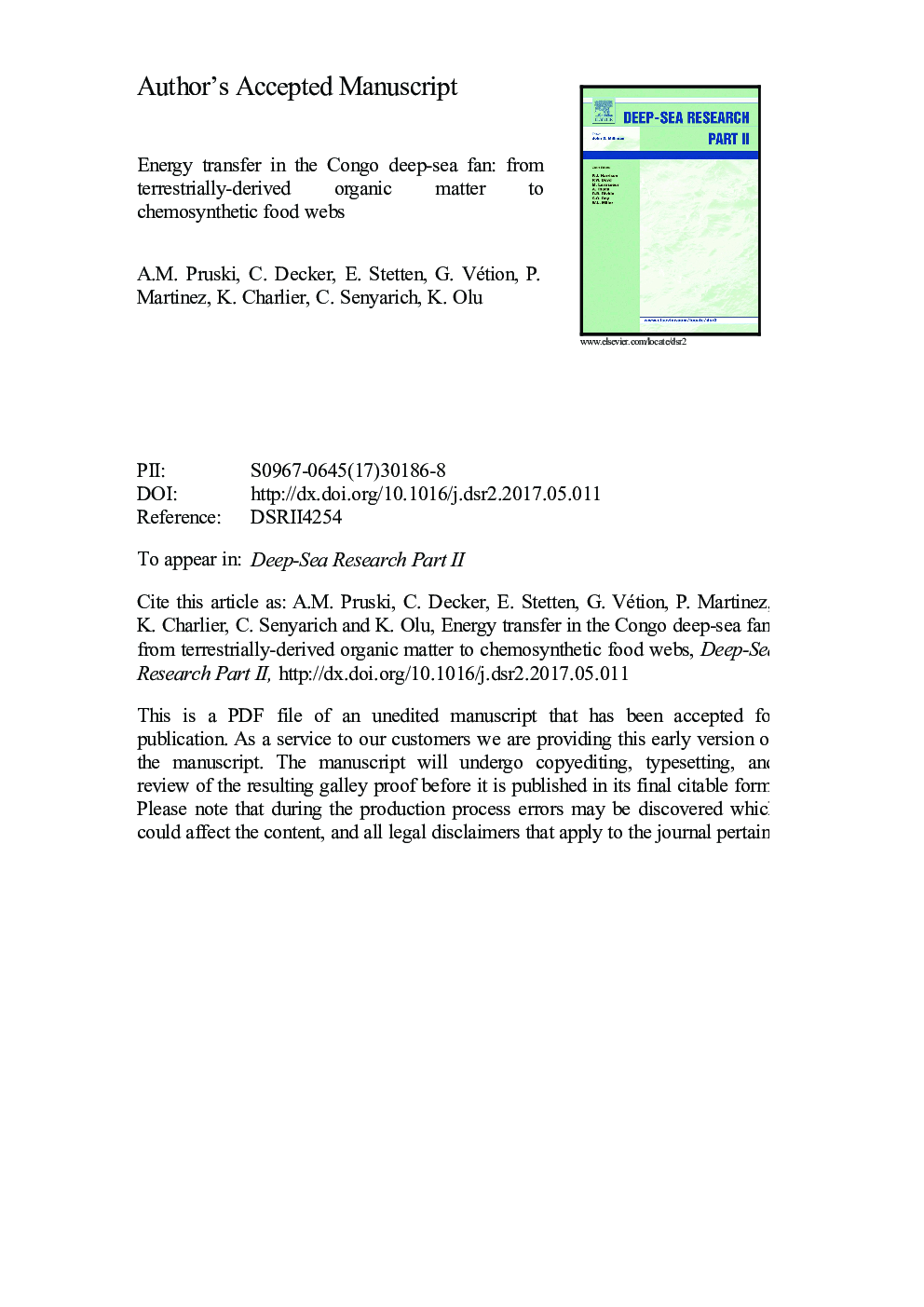| Article ID | Journal | Published Year | Pages | File Type |
|---|---|---|---|---|
| 5764809 | Deep Sea Research Part II: Topical Studies in Oceanography | 2017 | 79 Pages |
Abstract
Stable carbon and nitrogen isotopes and fatty acid biomarkers were then used to shed light on the feeding strategies allowing the energy transfer from the terrestrial OM brought by the turbidity currents to the abyssal food web. In the non-reduced sediment, surface detritivorous holothurians and suspension-feeding poriferans rely on detritic OM, thereby depending directly on the turbiditic deposits. The sulphur-oxidising symbiont bearing vesicomyids closely depend on the reprocessing of OM with methane and sulphide as final products. Their carbon and nitrogen isotopic signatures vary greatly among sites and could reflect the intensity of the anaerobic oxidation of methane (AOM) in the sediments. Within the vesicomyid habitats, the heterotrophic fauna exhibits a distinctively light carbon isotopic signature in comparison to the background sediments, clearly indicating the utilisation of chemosynthetically-derived OM. Fatty acid biomarkers further confirm that dorvilleid polychaetes consume aggregates that perform AOM. Terrestrial OM reprocessing by microbial consortium thus ensures its transfer to the benthic food web in the Congo deep-sea fan.
Related Topics
Physical Sciences and Engineering
Earth and Planetary Sciences
Geology
Authors
A.M. Pruski, C. Decker, E. Stetten, G. Vétion, P. Martinez, K. Charlier, C. Senyarich, K. Olu,
